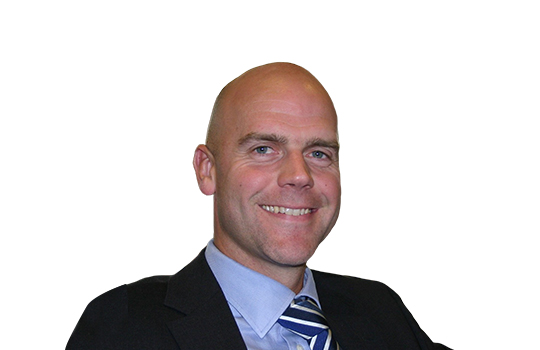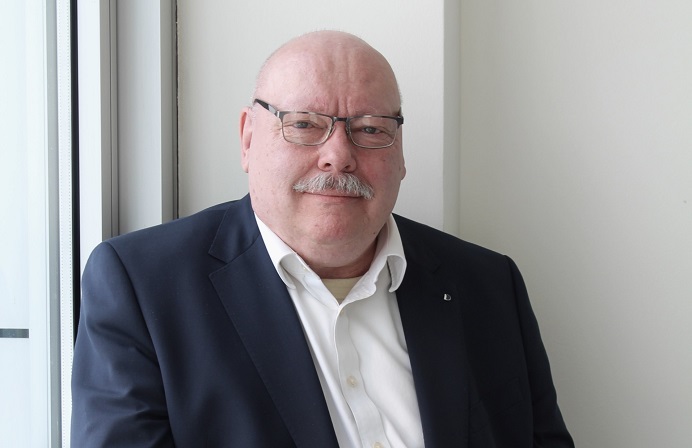
Standard Chartered Bank’s Head of Digital Banking and Channel Convergence speaks with FST Media about the importance of a multi-channel strategy to the bank’s overall digital banking vision.
FST Media: What are your priorities for the next 12 to 18 months?
Carlstrom: Over the next 12 to 18 months, we have a full agenda of transforming our retail business to become ‘digital by design’. This means that we are building end-to-end digital processes for our services and products so that clients can enjoy a seamless digital experience and added convenience. We are investing heavily and focusing relentlessly on the digital experience through improved channel convergence, branch efficiency and a better offering across all our channels so that the client experience is truly seamless. We are starting from a strong base with our award-winning digital banking offering. We are relentless about supporting our clients’ needs for convenient, smart and easy-to-use financial services. The vision is for our clients to interact with the bank on their terms – wherever, whenever and whichever channel they choose.
FST Media: What is the main challenge that you face in delivering a client-led digital experience across Standard Chartered Bank’s digital channels?
Carlstrom: Firstly, the speed of execution is a key challenge for us at Standard Chartered Bank. We have great ideas on delivering great digital services. We need to move fast enough to match the speed of our most agile competitors. Secondly, we have competing priorities. Often we face a difficult balance to strike between building for tomorrow and supporting today’s business, while operating on the legacy system. Regulations are another challenge. With new regulations being enforced in many markets, I believe this will have a significant impact on how fast we deliver our business-driven digital initiatives.
We are sharply aware of these challenges and have great cooperation within the bank to solve them. Standard Chartered Bank operates in the most exciting markets of the world where an enormous wave of the affluent and emerging affluent is rising and the demand for financial services is growing. We see these challenges as opportunities and if we get things right, we can capture these huge opportunities.
FST Media: How significant is a multi-channel strategy to your overall digital banking vision?
Carlstrom: Our clients are already living their lives on multiple channels, so a multi-channel plan is a must. We aim to deliver seamless experiences across multiple channels by removing frictions and enabling clients to bank with us on their terms. We are changing our business model fundamentally to be ‘digital by design’. In the past, the full range of services used to be available in branches and only some portion of it digitally. We plan to reverse the service pyramid radically: instead of incrementally expanding a range of available services on digital channels, all services should be ‘digital by design’. Whether clients choose to reach us via mobile, phone, internet or the branch, they will get the same, convenient, seamless banking experience. When they visit us in the branches, it will be for high value-added meetings and advice. Based on our research, clients generally prefer the convenience of mobile or online banking. We have seen globally how this has been adopted rapidly.
With emerging markets in Asia Pacific and Africa, we expect the pace of adoption to be even faster. These markets will potentially leapfrog and lead innovations that will be rolled out globally.
FST Media: How do you ensure that Standard Chartered Bank’s next generation technology offerings are fully aligned with the customer experience of the future?
Carlstrom: The speed of change over the last years has been tremendous and the velocity will only increase. In addition, technology offerings and customer responses will influence each other and evolve together. It is most important that we stay very close to the clients to make sure that we fully understand their needs and address them as proactively as possible. We must use the best technology that we have today and build in some flexibility to be able to accommodate any necessary changes along the way. We also need to be prepared to try out new ideas, understanding that some of these ideas might fail. This is exactly what the startups are doing, and that is why they are so nimble. We want to create exploratory work streams where we can test new ideas closely with our clients to see what works.
FST Media: With digital transformation an increasing priority for banks in Asia Pacific, what are your plans to engage customers in rural areas where banks do not have a strong physical presence?
Carlstrom: Technology is changing the banking landscape dramatically. Physical presence is no longer the main means to provide access to financial services nor an accurate measure of the scale of banking business. Digital solutions like mobile banking or video banking will give clients better and easier access to everyday banking, regardless of location. That is one of the reasons why Standard Chartered Bank is focused on building a ‘digital by design’ banking experience for our clients: to deliver easy, convenient banking through whatever channel the client prefers, whenever the client wants it.
FST Media: What technology or innovation will be a game-changer in the banking industry over the next five years?
Carlstrom: We currently see the big battle taking place in the payments industry. A lot of new players, both globally and locally in each market, are trying to become dominant players. It will be very interesting for Standard Chartered Bank to follow and participate in the developments. The two other big areas that I believe will make a key difference are around digital advice and user experience. We need to look at how as a bank we can make our clients’ lives easier – not only in conducting financial transactions but in providing full financial control. This means we should provide information and advice to the client when the client needs it, both in a reactive and proactive way. To do that, we need to make good use of the insights we have into our client behaviours and patterns, while understanding client preferences. This will help us provide constant updates to the clients and make relevant, timely proposals for their financial decisions. We need to do this in a way that simplifies our clients’ lives, so that we become their financial partner instead of simply being a supplier of financial solutions.
FST Media: How are you leveraging big data and analytics to deliver personalised and tailored solutions for your customers?
Carlstrom: Technology presents lots of opportunities as well as challenges to banks. Banks are now seeing a great opportunity to better engage with their clients by reinventing themselves through data analytics. It will enable banks to offer proactive advice, services and products through a predictive model leveraging the rich client data. It will help us meet the growing needs and expectations of our clients, which will strengthen our relationships with them and build loyalty. It would be one of the key factors that will help shift us into a truly client-focused bank.
FST Media: What is proving to be your most effective customer acquisition channel and why?
Carlstrom: I believe that soon our most effective form of customer acquisition will be our digital channels. Today, we can on-board new clients for selected products digitally, but in the near future we will have a complete digital client acquisition process. Standard Chartered Bank operates in many of the most exciting and fastest growing markets in the world across Asia Pacific, Africa and the Middle East. We have an international network, expertise, trusted client relationships and an edge in our wealth offering build over our 150 plus year history. We will continue to focus on delivering these offerings across all channels for our clients. Client acquisition is not only a matter of channels. A good client experience drives client loyalty and ultimately acquisition. According to industry research, client experience is the biggest reason to defect and choose a main bank. We want to design the best client experience across our digital channels.
FST Media: How do you encourage a culture of innovation in your team?
Carlstrom: We have a great team of highly-skilled people. Our team have a strong interest in developing our digital offerings with a primary focus on user experience. We want to focus less on innovation per se and more on how we truly simplify banking. The actual need for financial services or products has not changed fundamentally. We need to pay, borrow, save and protect our financial resources. Those fundamental needs have been there since banking started, but how we meet the needs is changing rapidly, hence my focus is on improving the user experience. To shift our focus to clients and innovation, we need changes and we need them fast.
FST Media: What will the digital payments space look like in 2020?
Carlstrom: In five years, the digital payment arena will likely have passed the current situation of a rapid growth of new players and the industry would have reshaped itself. Like many other industries, as these new players emerge and interact with one another we will have a less fragmented industry. Perhaps a few global players of payment services will take the lead. I also think that, in many countries, we will have local solutions to cover a majority of the low value transactions such as transportation, peer-to-peer payments and small ticket B2C. These country or regional specific solutions will likely differ depending on regional characteristics.
Will it completely change the banking landscape? I do not think so. Banks are adaptive and will change to adapt to the new landscape. A lot of partnerships will be formed to allow for simple payment solutions that are connected to the rest of the clients’ financial infrastructure.
FST Media: How do you define success?
Carlstrom: Success is usually measured in numbers such as the amount of products sold, net promoter scores or other KPIs. For me, it is all about our clients. I want to hear that our clients appreciate what are offering. If we deliver a positive user experience that makes clients say it really helped them or made everyday banking simpler, then we would have succeeded. Once we reach that point, I know that the numbers and other KPI are bound to follow.
FST Media: With respect to career development, what is the best advice you ever received?
Carlstrom: The best advice I received was to find a job that is fun and interesting to you. If you enjoy the journey, you are more likely to do a good job. Try to find your purpose and your vision in your job. I spent some time defining the purpose of my job and when I did I felt a great connection to it, as well as the satisfaction of knowing what I can contribute to society.
FST Media: Every leader has a legacy they wish to be remembered for. What is yours?
Carlstrom: My vision is to be part of changing the financial industry and the perception of banking. When we read the newspapers today, we see a lot of coverage on the negative aspects of banking.





